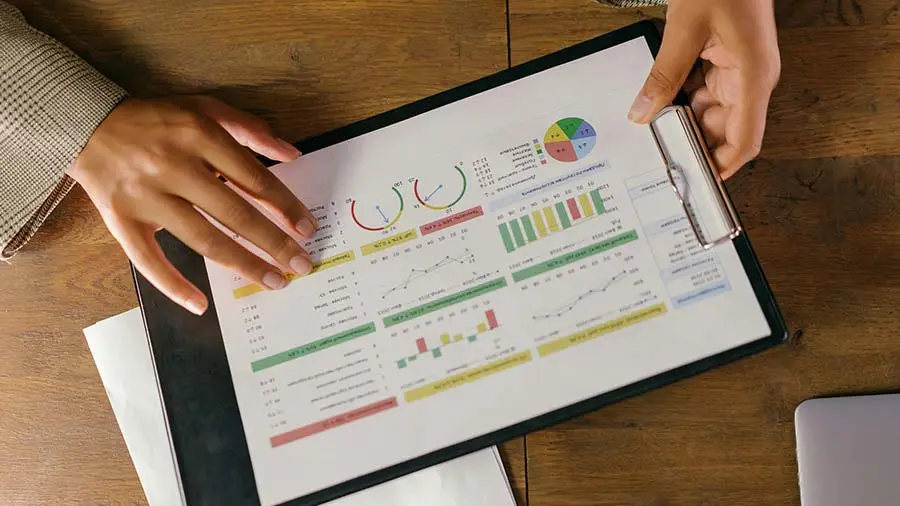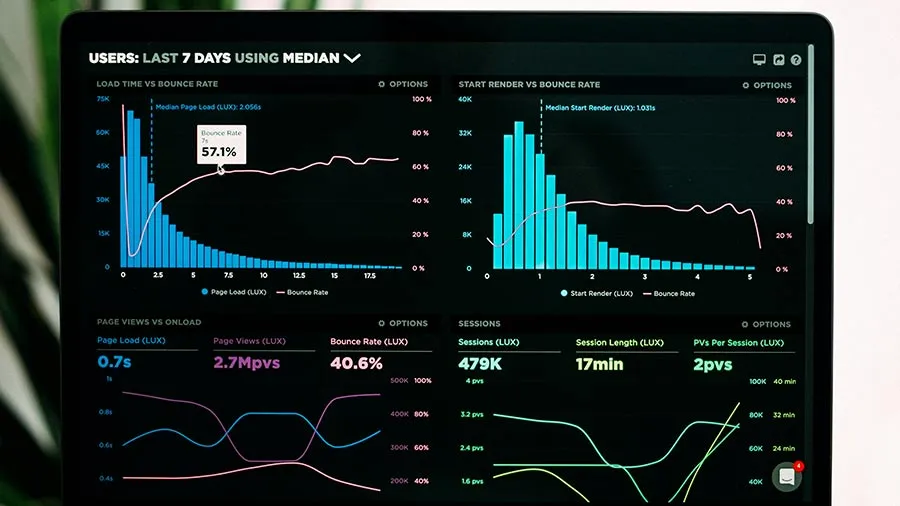Lead scoring is the backbone of an efficient sales and marketing strategy—helping businesses cut through the noise and focus on the prospects most likely to convert. By assigning numerical scores based on factors like demographics, engagement, and buying signals, companies can objectively rank leads and tailor their outreach for maximum impact. In today’s crowded digital marketplace, not every lead deserves the same attention. Without a structured scoring system, teams waste time chasing unqualified prospects while high-value opportunities slip away. This article will explore how lead scoring strategy works, different scoring models, and actionable strategies to implement it effectively, ensuring your team targets the right leads and accelerates revenue growth.
What is lead scoring in marketing?
Lead scoring is a marketing and sales strategy used to rank prospects based on their potential to become customers. This system assigns numerical values—or scores—to leads depending on various factors like their behavior, engagement with your brand, demographics, and stage in the buyer’s journey. In B2B marketing, lead scoring strategy combines firmographic data (such as job title, company size, or industry) with behavioral data (like webinar attendance, content downloads, or email interactions) to evaluate sales readiness. In inbound marketing, lead scoring is essential for identifying and nurturing prospects who are actively engaging with your content and offerings.
Positive behaviors or traits, such as visiting pricing pages or being from a target industry, result in higher scores, while negative signals, like unsubscribing from emails, lower a lead’s score. The goal is to help sales and marketing teams prioritize leads that are more likely to convert, enabling better resource allocation and higher conversion rates. By focusing on high-intent leads, companies can speed up the sales process and improve overall ROI from their lead generation efforts.
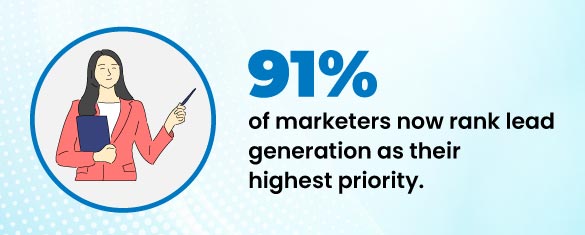 Lead Scoring Benefits for Your B2B Business:
Lead Scoring Benefits for Your B2B Business:
Lead scoring benefits businesses by helping them identify and prioritize high-quality leads, enabling sales and marketing teams to operate more effectively. By assigning value to prospects based on behavior, engagement, and demographic fit, lead qualification ensures your teams focus on those most likely to convert, ultimately driving revenue and efficiency.
1. Improved Sales Efficiency and Productivity
Lead scoring enables sales teams to focus on prospects who are most likely to buy, reducing time spent on unqualified leads. This boosts productivity and shortens the sales cycle. With clear scoring criteria, your team targets the right decision-makers, streamlining the conversion process. A Marketo study shows that a mere 10% improvement in lead quality can result in a 40% increase in sales productivity.
2. Accelerated Revenue Growth
Focusing on high-scoring leads improves conversion rates and drives faster revenue generation. Implementing lead scoring for account-based marketing enables businesses to prioritize high-value accounts that closely match their ideal customer profile. With a predictable pipeline of qualified prospects, businesses can allocate resources more efficiently and reduce revenue leakage caused by lost or ignored leads. Leveraging storytelling to address pain points, challenges, and aspirations makes campaigns more human and impactful, delivering up to 5–8x higher ROI.
3. More Effective and Targeted Marketing Campaigns
Developing a lead scoring system forces a deeper understanding of your ideal customer profile. With this insight, marketing teams can create personalized, high-conversion campaigns tailored to specific segments. Segmenting leads by behavioral and demographic data ensures the right message reaches the right audience, resulting in up to 5–8x higher ROI.
4. Stronger Sales and Marketing Alignment
Sales lead segmentation fosters better collaboration between marketing and sales by clearly defining what constitutes a quality lead. This alignment improves the lead handoff process and minimizes miscommunication, ensuring both teams work toward shared goals. With a unified view of lead quality, teams can focus on optimization, feedback loops, and long-term strategy rather than resolving confusion or inefficiencies.
Types of Lead Scoring Models:
A lead evaluation model is a structured system for assessing and ranking potential leads based on their likelihood to convert. It assigns numerical values to each lead according to specific, predefined criteria. Common types of lead scoring models include
1. Demographic/Firmographic Model
This model scores leads based on who they are and how closely they match your ideal customer profile. In B2B, it includes company size, industry, and job title; in B2C, it might include age, income, or location. This is often based on form submissions or data enrichment. It helps prioritize leads that fit your target audience, ensuring sales reps spend time on the right prospects.
2. Online Behavioral Model
The behavioral model evaluates a lead’s interest by analyzing how they interact with your website and syndicated content. Actions like visiting multiple pages, spending time on product or pricing pages, or downloading assets through content syndication are signs of high intent. Behavioral scoring helps distinguish casual browsers from leads actively researching your offerings, allowing you to nurture engaged prospects more strategically.
3. Engagement Model
The engagement model focuses on how involved a lead is with your brand across channels. This includes email open and click-through rates, social media activity, event attendance, and webinar participation. Higher engagement equals higher scores. It’s a dynamic, real-time method that helps you track brand affinity and identify when a lead is ready for sales outreach.
4. Purchase Intent Model
This model assesses how close a lead is to purchasing by tracking high-intent activities such as requesting a demo, starting a free trial, or adding items to a cart. It leverages first-party behavior and intent signals to rank leads that are nearing the end of the buying cycle, helping sales teams act quickly on hot leads likely to convert soon.
5. Predictive lead scoring
AI lead scoring uses machine learning to automatically identify patterns in your customer data. This predictive lead scoring approach evaluates thousands of attributes and past behaviors to determine which leads are most likely to convert in the future. Unlike traditional models, AI lead scoring continuously updates as new data comes in, making it highly adaptive and accurate for long-term forecasting.
6. Negative Scoring Model
This model subtracts points for disqualifying traits or behaviors, such as unsubscribing from emails, using personal email domains (e.g., Gmail), or showing signs of spam (e.g., random keystrokes in forms). Negative scoring plays a crucial role in lead scoring for marketing qualified leads, ensuring that unqualified prospects don’t waste valuable sales time.
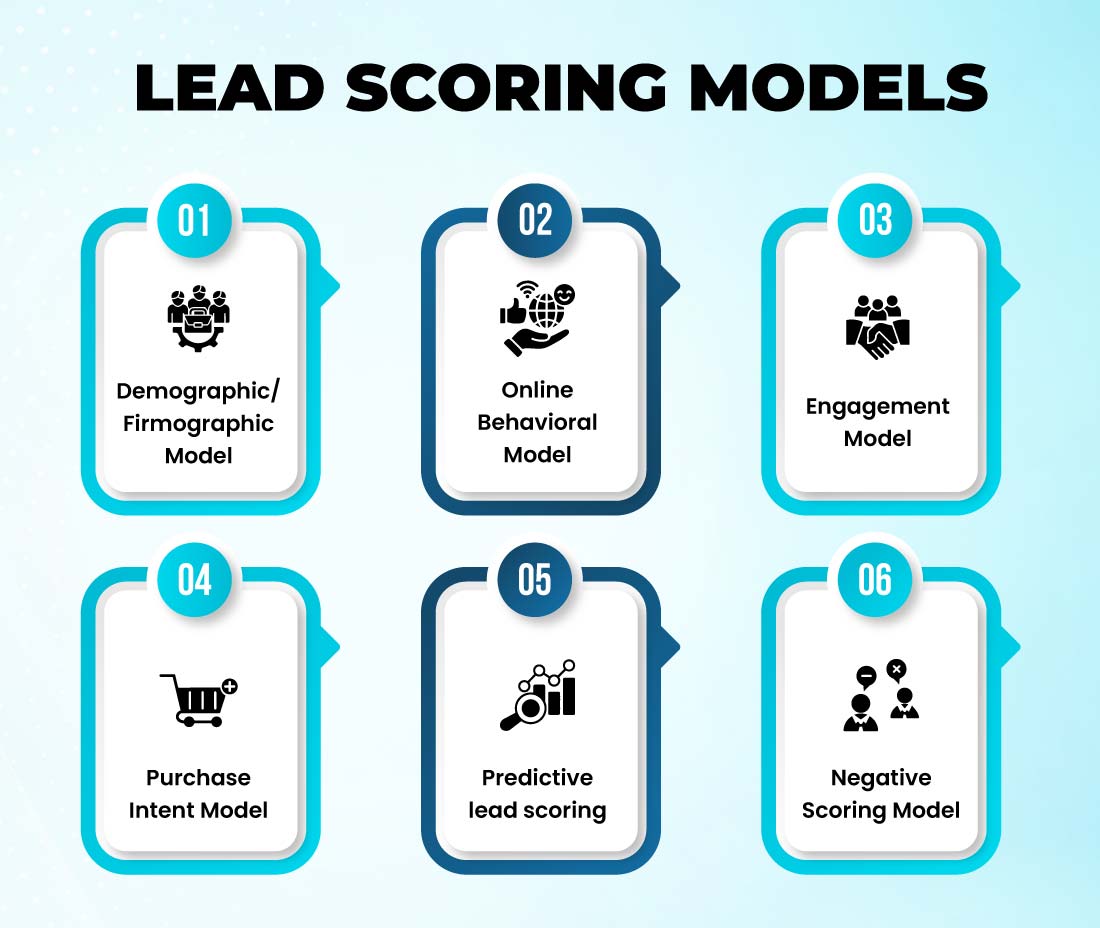
Key data points needed for successful lead scoring:
Choosing the right data is crucial for effective lead qualification, whether employing manual or predictive models. High-quality and abundant data enhance accuracy in identifying promising prospects. This data should encompass several key categories. Demographic data, including job title, location, and age, offers personal insights. For B2B, job roles highlight decision-making authority, while for B2C, age and income are vital for consumer profiling. Firmographic data, essential lead scoring for B2B, details the lead’s organization, covering company size, revenue, industry, and location, helping determine product-market fit. Behavioral data tracks engagement with your brand through website visits, email clicks, content downloads, and social media interactions; high engagement signals strong interest. Finally, technographic data reveals a company’s technology stack, useful for B2B compatibility, while intent data shows topics a lead researches, indicating purchase readiness.
To populate your lead scoring tool with this diverse data, multiple sources are invaluable. Marketing analytics tools provide rich insights into prospect behavior, such as email engagement, website activity, and conversion rates, allowing you to prioritize highly engaged leads. Your sales team, with their direct market interactions, offers practical customer feedback on what resonates with prospects and accelerates sales. Lastly, directly engaging with existing customers through surveys or interviews can uncover their motivations for converting, validating existing assumptions, or revealing new insights. Integrating data from these varied sources creates a robust lead scoring system, enabling you to effectively nurture prospects and accelerate their journey towards becoming customers. This comprehensive approach ensures you’re not just guessing, but making data-driven decisions that propel your sales forward.
Step-by-Step: Designing a Winning B2B Lead Scoring Strategy:
A successful B2B lead scoring system requires careful implementation, with key steps to optimize performance and support your business goals:
1. Define Your Ideal Customer Profile (ICP)
Start by clearly identifying who you’re targeting. An Ideal Customer Profile (ICP) outlines the firmographics and behaviors that define high-value leads, such as industry, company size, location, pain points, and decision-making factors. Align with your sales and marketing teams to craft this profile using real data from successful deals. A well-defined ICP not only guides your lead ranking but also ensures your efforts are focused on leads with the highest conversion potential.
2. Establish Key Lead Qualification Criteria
Once your ICP is set, determine the criteria that reflect both buyer intent and fit. Split these into two categories: explicit data (demographics like job title, company size, and location) and implicit behavior (email opens, content downloads, page visits, etc.). Each criterion should signal how closely a lead matches your ICP or how engaged they are in the buying journey. Collaborate cross-functionally to validate that these attributes correlate with past conversions.
3. Assign Point Values Based on Importance
With your scoring factors defined, assign point values based on how predictive each is of conversion. For example, C-level executives at large companies might earn more points than junior roles at small firms. Similarly, downloading a pricing guide should carry more weight than simply visiting a blog. Use a tiered point system—e.g., critical = 10–15 points, important = 5–9, influencing = 1–4. Negative behaviors, like email unsubscribes, can deduct points. Tailor your scale to your sales funnel and test it against historical data to ensure it aligns with actual sales success.
4. Set a Sales-Readiness Threshold
Determine the minimum score a lead must reach before being passed to sales—this is your SDR-ready score. If it’s too low, your sales team wastes time on unqualified leads; if too high, you risk missing hot opportunities. Use historical conversion data to set an initial threshold, then refine it based on ongoing feedback. Leads above this score should receive immediate sales outreach, while lower-scoring leads remain in lead nurturing tracks.
5. Continuously Monitor, Automate, and Optimize
Use your CRM and marketing automation tools to continuously update scores as new data becomes available. Monitor performance regularly—are SDRs satisfied with lead quality? Are conversion rates improving? Refine your model based on real-time feedback, campaign results, and changes to your ICP. Automate the lead scoring process using platforms like HubSpot lead scoring, Marketo, or Salesforce lead scoring to ensure scalability and consistency.
 Top Lead-Scoring Mistakes to Avoid:
Top Lead-Scoring Mistakes to Avoid:
A well-designed model can significantly enhance your lead scoring for B2B marketing and sales alignment, but it’s also vulnerable to several common pitfalls that can undermine its effectiveness. One of the most frequent mistakes is poor data quality. When your lead data is incomplete, inaccurate, or outdated—such as incorrect job titles, duplicate entries, or unverified emails—it leads to flawed scores and misjudged priorities. To counter this, companies should invest in real-time data validation at the point of capture, implement regular CRM hygiene checks, and integrate lead scoring tools like Clearbit or ZoomInfo to enrich and maintain data accuracy.
Another critical error is overcomplicating the scoring model. While it may be tempting to track every user behavior or demographic trait, too many variables can confuse teams and dilute focus. Complex models become hard to manage and interpret. Instead, prioritize simplicity by focusing on the most predictive attributes and assigning clear, tiered point values. This streamlined approach not only enhances usability but also ensures consistency in scoring across campaigns. Sales and marketing misalignment is also a common issue. If both teams operate with different definitions of what constitutes a qualified lead, even the most advanced scoring model will fall short. Regular collaboration is key—both teams must jointly define the Ideal Customer Profile (ICP), agree on scoring thresholds, and maintain open feedback loops to refine criteria based on real-world outcomes.
A failure to update scoring criteria is another pitfall. As your market, product, and customer behaviors evolve, your lead scoring system must keep pace. Relying on outdated criteria can result in low-quality leads being prioritized or high-intent prospects being overlooked. Conduct quarterly reviews of your scoring model to adjust point values and eliminate actions that no longer indicate strong purchase intent. Lastly, a great lead evaluation model is ineffective without timely follow-up. Leads that hit the qualification threshold but receive delayed outreach can quickly lose interest. To prevent this, integrate real-time alerts and automated workflows within your CRM or communication platforms like Slack. This ensures your sales team acts while the lead is still engaged, maximizing conversion potential and driving better ROI.
How to Identify the Right Data Points for Lead Qualification Success?
Selecting the right lead scoring metrics for sales lead scoring starts with aligning your scoring system to your sales and marketing goals. Clearly define what you want to achieve—whether that’s generating higher-quality leads, reducing sales cycle time, increasing conversion rates, or enhancing customer engagement through initiatives like an awareness campaign. Once objectives are in place, identify the key performance indicators (KPIs) that support those goals. For a lead scoring example, if your aim is to improve lead quality, focus on metrics like the lead-to-customer conversion rate, which reflects how well leads align with your ideal profile.
Conversion-focused metrics such as lead-to-opportunity and opportunity-to-customer conversion rates are equally important. These indicate how efficiently leads move through the funnel and help highlight gaps in your current scoring model. If leads aren’t converting, your criteria might need refining to better reflect buying intent. Incorporate a mix of demographic, behavioral, and firmographic data to build a well-rounded view of lead quality. For B2B organizations, factors such as job title, company size, industry, and engagement behaviors—like visiting key web pages or downloading gated content—are vital. These inputs ensure your scoring model reflects real interest and buyer fit.
Using historical sales data can also inform your metrics selection. Analyze past deals to determine which behaviors or characteristics most often led to conversions, and assign point values based on their influence. This data-driven approach strengthens your scoring accuracy. In addition to core metrics, monitor indicators that evaluate the lead scoring system itself. These include email unsubscribe rates (which can signal targeting issues), engagement levels across nurtured and non-nurtured leads, and the origin of lead interactions (e.g., demo requests or pricing page views). Shorter sales cycles and increased upsell or cross-sell rates are also strong signs that your prospect scoring model is effectively identifying high-value prospects.
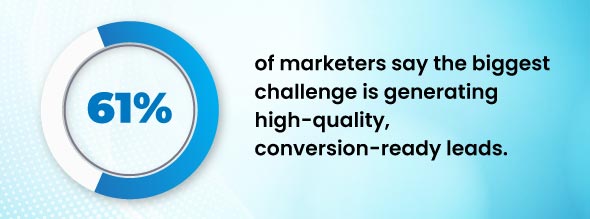
B2B Lead Scoring Best Practices:
1. Leveraging Product Usage Data 350
By applying key B2B lead scoring best practices, you can create a smart, hybrid model that combines product engagement insights with traditional qualification criteria. This is especially powerful in ABM strategies, where targeting the right accounts with tailored outreach is essential. Here’s a step-by-step approach to building a lead evaluation framework that leverages product usage data effectively:
2. Redefine Qualification with Fit + Behavior
To implement a product usage model, start by combining firmographic fit (e.g., industry, role, company size) with behavioral signals (e.g., feature use, login frequency). Define what an “ideal lead” looks like by aligning with your Ideal Customer Profile and product engagement patterns. Collaborate with product, sales, and marketing teams to identify high-intent actions—like inviting teammates or using premium features—that reliably indicate buying readiness.
3. Assign Strategic Weights to Usage Actions
Not all product interactions are equal. Assign higher scores to meaningful behaviors like reaching milestones or using key features, and lower scores to basic actions. Use historical data to evaluate which actions correlate with conversions, and assign points accordingly. Incorporate negative scoring too—for example, reduce points for inactivity or shallow usage. This ensures your scoring reflects true purchase intent, not just surface-level engagement.
4. Integrate Product Data into Your CRM
Ensure product usage data flows seamlessly into your marketing automation and CRM systems. Use lead scoring tools like Segment, Pendo, or CDPs to send real-time engagement signals to platforms like Salesforce or HubSpot. This integration enables instant scoring updates and sales alerts. Collaborate with your dev or data team to set up this infrastructure—it’s a one-time effort that continuously boosts speed-to-lead response.
5. Build a Hybrid Scoring Model
Enhance, don’t replace, your current scoring system. Combine traditional lead scoring (fit) with product usage scoring (engagement). Use two separate scores or a unified formula that balances both dimensions. Set thresholds for both fit and usage before passing a lead to sales. This prevents wasted effort on leads that are active but not qualified—or qualified but disengaged—ensuring sales get the most relevant opportunities.
6. Set Up Real-Time Alerts and Sales Lead Scoring
Once scoring is in place, activate real-time alerts for leads that meet product-qualified thresholds. Use CRM workflows or Slack/email notifications to ensure reps can act fast. For example, notify sales when a lead uses a high-value feature or adds team members. Pair alerts with contextual content (e.g., case studies or demo invites). Speed is crucial—real-time follow-up on active leads dramatically increases conversion potential.
Conclusion
In an increasingly competitive B2B landscape, lead scoring empowers businesses to focus their efforts where it truly matters—on high-intent, high-value prospects. By leveraging demographic, behavioral, and AI-powered insights, companies can optimize outreach, shorten sales cycles, and improve conversion rates. From better sales and marketing alignment to predictive intelligence and product usage tracking, the benefits of lead qualification are both immediate and long-term. When implemented strategically and continuously refined, lead scoring transforms guesswork into data-driven action, enabling your teams to work smarter, close faster, and accelerate revenue growth with precision.


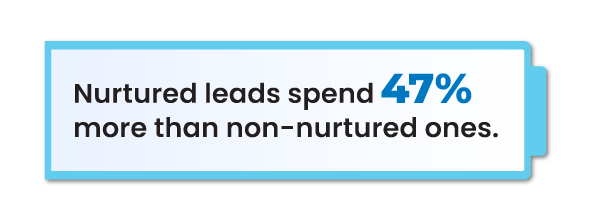 Top Lead-Scoring Mistakes to Avoid:
Top Lead-Scoring Mistakes to Avoid:
